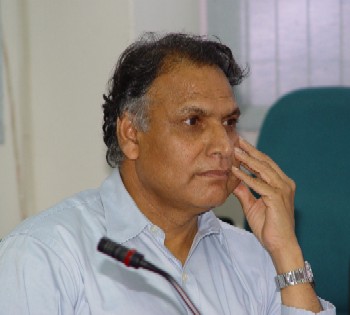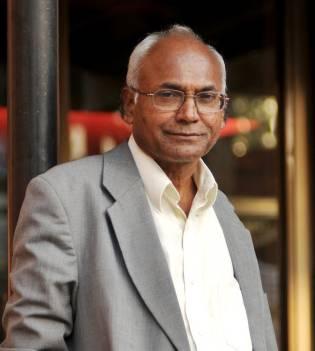Chandra Bhan Prasad
Wrong history real issue, not cartoon
A couple of weeks back, almost all television channels and newspaper carried the controversy that arose over a National Council of Educational Research and Training (NCERT) book that had a caricature of Dr BR Ambedkar and Jawaharlal Nehru. The newspapers, news channels and columnists were aggrieved that the Dalits were increasingly turning intolerant. This in itself is a big achievement for the community. Newspapers, news channels and hundreds of columnists have so far rarely shown concern for the social intolerance Dalits face daily. The fact that the media actually decided to run stories about it is really amazing.
The cartoon, created in 1949 by eminent political cartoonist Shankar, shows BR Ambedkar, chairman of the drafting committee, riding a snail with Jawaharlal Nehru standing behind with a whip in his hand. The cartoon was included in the Political Science textbook of Classes IX to XI. Of course, the NCERT has decided to remove the cartoon from the next lot of books.
The question here is not about the cartoon. But the debate that followed. Many scholars last week, continued to talk about freedom of expression. Some said that the Dalit MPs were muzzling freedom of expression. They cited Parliament’s resolve of deleting the cartoon from the NCERT textbooks. This is definitely breaking news material. After all, it is good to know that some intellectuals have realised that there is a thing called freedom of expression.
Strangely, these scholars who are crying foul today over how the Dalit MPs are curbing their freedom of expression never bothered to write a single word about absence of Dalit opinion in the media. Since April 1999, I have been asking why the other newspapers are not following examples set by The Pioneer newspaper and the Telugu Daily Vaartha by inviting Dalits to write columns. I believe the answer is simple — for most of the media, Dalits either have an opinion or have the ability to articulate.
And when suddenly a cartoon becomes a bone of contention, the news channels have a problem. Not because of the controversy but because they fear that their right to poke fun at others will be taken away from them. And while I stand in support of the media when it comes to making fun of politicians and bureaucrats, I want to ask them why they have never poked fun at caste order?
And while it is true that Parliament’s suggestion of removing the cartoon from the textbook offended them but have the cartoonists ever felt the need to be offended by the atrocities of the caste order? The way a section of the media and intellectuals have behaved post-Parliament debate makes me laugh at the situation rather than angry. Let’s consider the following issues at hand. First, of putting the cartoon in the textbook.
- In 1949, very few Indians understood and spoke English
- Those who spoke the language belonged to a very privileged social class
- Shankar published the Ambedkar-Nehru cartoon in a magazine he published as an individual
- Founded in 1948, Shankar’s Weekly was only a year old and may have not had more than a 1,000 subscribers
- The magazine would have been read by the most privileged class of English speaking journalists, few English speaking politicians and academicians
In other words, the cartoon was meant for a few discerning minds of his time who interacted with Jawaharlal Nehru and Dr Ambedkar on a regular basis.
Second, Shankar’s cartoon made its way into the Political Science books six decades later.
- The minds of Class XI students are not as mature as that of professors or journalists
- School children have come across usage of the term snail in idioms or the more popular rabbit and snail story. Some may even come across the word in a programme on animals. The term snail is associated with slow speed
- These students are unlikely to read the real meaning behind Nehru’s whip behind Ambedkar the way a mature mind will read
- To the young mind, Ambedkar sitting on the snail would mean that he was an obstacle in framing the Constitution
- The students will form a negative opinion of Ambedkar which takes away the contribution and the work he has done for the country.
Third, what is the objection all about?
- Neither the MPs and nor is the common man objecting to the content in the textbook. The target and the problem is the cartoon
- It has been found that sketches catch the imagination of the people. They remember a caricature for many years in comparison to a written or spoken word
So obviously, by putting the cartoon in the wrong context, we are teaching our children wrong history. After the Constitution was drafted, all were in agreement that Dr Ambedkar had managed to complete it in a record time — it took 2 years, 11 months and 18 days to finish — and that it was a brilliant Constitution.
So why did Shankar make a caricature and link it to a snail will perhaps remain a mystery. All that I can say is that those who teach young minds wrong history are writing the wrong future for the country.
[Courtesy: Daily Pioneer, May 19, 2012]








